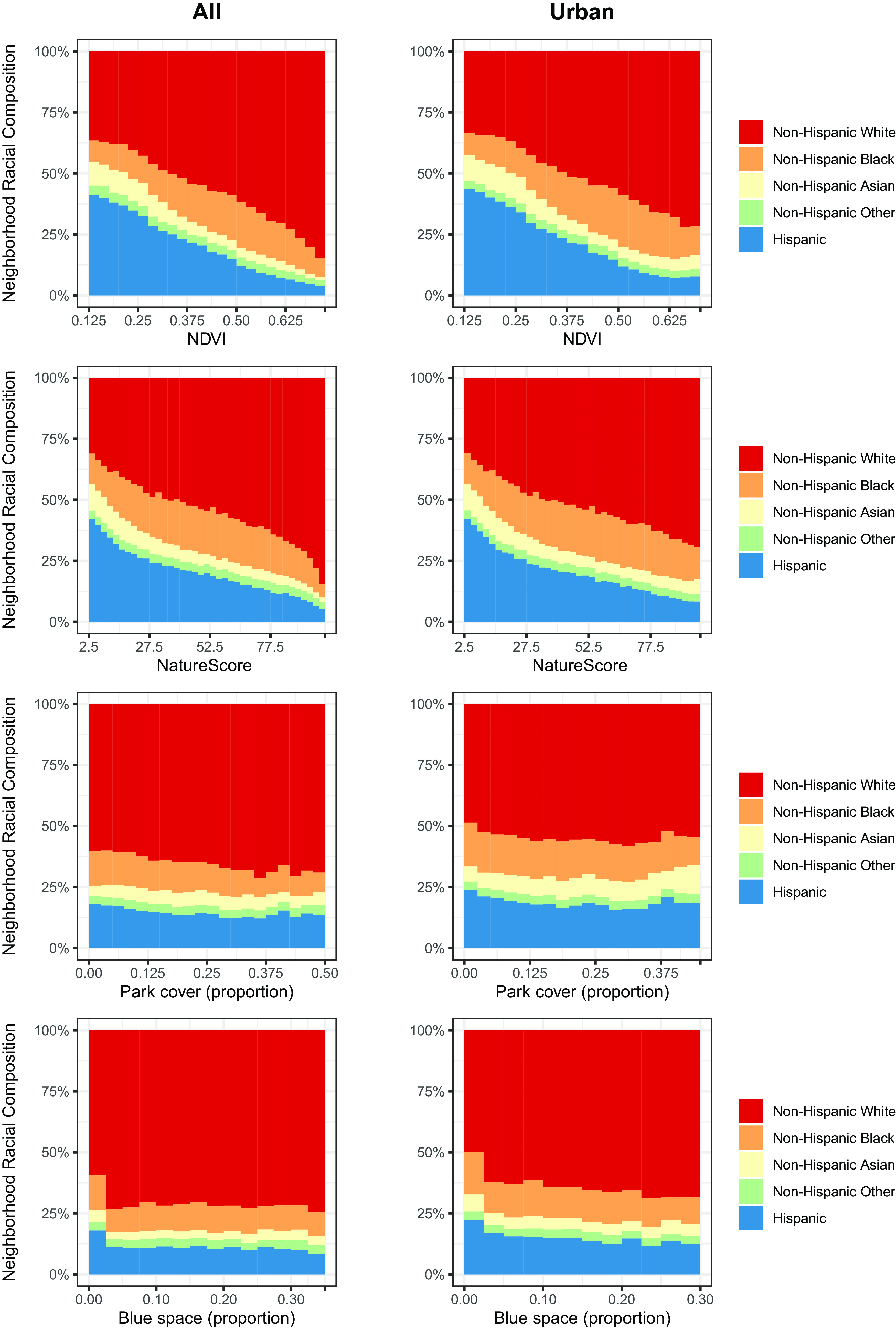Figure 2.

Average 2015–2019 race/ethnicity composition by levels of NDVI (2019 data), NatureScore (2020 data), park cover (2020 data), and blue space (1984–2018 data) in all census tracts () and in urban census tracts () in the contiguous United States after excluding census tracts with missing data. See Tables S2–S9 for corresponding numeric data. The x-axis of each plot was truncated by the 2.5 and 97.5 percentile. Note: NDVI, Normalized Difference Vegetation Index.
